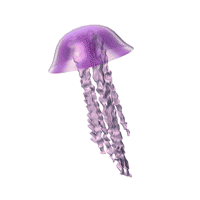Posted on March
31, 2016
These Colors, Don’t Ruin
Team USA goes incognito
by
Daniel
Clark
The United States national soccer team put on a dismal
performance in a recent 2-0 loss in Guatemala, during which they were unfocused
and incohesive, and generally very much unlike
themselves. You might not have even
known that the USA was playing if the graphics on your screen hadn’t told you
so, because the players were not wearing our national colors. Instead, they wore black jerseys with patches
of blue and burgundy on the shoulders.
If you didn’t know better, you’d have thought the Guatemalans were
playing against some minuscule European nation, which started out as a buffer
zone to prevent the people of Switzerland and Liechtenstein from throwing
cheese at each other.
 Four
days later, when Team USA avenged that defeat with a 4-0 rout in Columbus, they
wore their home whites. The sleeves,
however, were almost a Carolina blue, far closer to the shade of blue on the
Guatemalan flag than on our own. It’s as if
being identifiably American has been deemed unfashionable, which it probably
is.
Four
days later, when Team USA avenged that defeat with a 4-0 rout in Columbus, they
wore their home whites. The sleeves,
however, were almost a Carolina blue, far closer to the shade of blue on the
Guatemalan flag than on our own. It’s as if
being identifiably American has been deemed unfashionable, which it probably
is.
It’s a quintessentially American quality that we’ve
never worried about offending the effete sensibilities of the sniveling
class. When a sports team is representing
the United States, that fact should be immediately recognizable, even if others
may find it obnoxious and corny. Team
USA’s shorts should have red and white vertical stripes, just like the ones on
Uncle Sam’s trousers. The jerseys ought
to be the same shade as the blue field on our flag, with rows of bold white
stars at the waist and shoulders. Across
the chest should be a likeness of Benjamin Franklin, riding on the back of a
gigantic skyrocket with the words, “We’re
the A-freakin-mericans!”
emblazoned on the side. Anyone who would
be embarrassed to wear it doesn’t deserve to be on the team anyway.
It’s tempting to blame the studiously non-American
duds on the apparel manufacturer, Nike, which famously makes ugly football
uniforms for CEO Phil Knight’s alma mater, the University of Oregon, often
deviating from that school’s team colors of green and yellow. The difference is that the U of O has little
choice but to humor Knight, who is by far its greatest benefactor. If he thinks the Fighting Ducks would look
snappy in brown with purple polka dots, then that’s what they’ll wear. The US Soccer Federation is under no such
obligation. If it doesn’t want its
players to dress like court jesters, Nike cannot force them to.
Besides, the soccer team is just picking up on a trend
that’s been underway for years, most notably in hockey. At most international hockey tournaments, if
you see a team in red, white and blue, it’s probably the Czech Republic,  Russia,
or even France. When the USA is the
official visiting team, it will usually be wearing very dark, solid blue
uniforms, with little or no red in them.
The last Olympics in which Team USA wore traditionally American attire
was at the 2002 Salt Lake City games.
You know, the ones that were the subject of so much media harrumphing
for their “jingoism” – which is what you call patriotism if you don’t like
it. Ever since then, USA hockey has
assumed a more apologetic profile.
Russia,
or even France. When the USA is the
official visiting team, it will usually be wearing very dark, solid blue
uniforms, with little or no red in them.
The last Olympics in which Team USA wore traditionally American attire
was at the 2002 Salt Lake City games.
You know, the ones that were the subject of so much media harrumphing
for their “jingoism” – which is what you call patriotism if you don’t like
it. Ever since then, USA hockey has
assumed a more apologetic profile.
For the past seven years, we’ve had a president who
derides the concept of American exceptionalism, but he’s only a symptom of a
sickness that had already taken hold.
Those who think the language of our Constitution is still relevant are
regarded today as simpletons.
Citizenship and legal residence in our country are now treated as mere
technicalities. Gradually, we’ve begun
trading our good old American greenbacks in exchange for Eurofied,
multicolored currency notes.
Perhaps the most potent accelerant in this trend
toward post-Americanism is the fact that one of our two major political parties
immersed itself in a five-year effort to make America lose a war, and yet was
rewarded by the voters with almost monopolistic control of the federal
government for two years afterward. Is
it any wonder that our national teams see a marketing advantage in distancing
themselves from their country?
American exceptionalism is still observed, except that
it’s been turned into a negative. Every
country may enforce its borders, except ours.
Every country may celebrate the discovery of oil on its land, except
ours. Every country’s soccer team may
demonstrate pride in its homeland, except ours.
So go ahead and enjoy the rest of the World Cup
qualifying matches involving the black, burgundy and blue. No three cheers for them, though. That would be “jingoistic.”
The Shinbone: The
Frontier of the Free Press